Well, yes, I've got yet another Keithley piece. Need a cure already!
This time it's 6221, DC/AC precision low-noise current source. Essentially it's an 11W 4-quadrant SMU, but without measurement functionality and much improved current source performance.
To my memory, I never saw anyone posted guts of 6220/6221 anywhere online before, so enjoy!
Exterior, controls and initial condition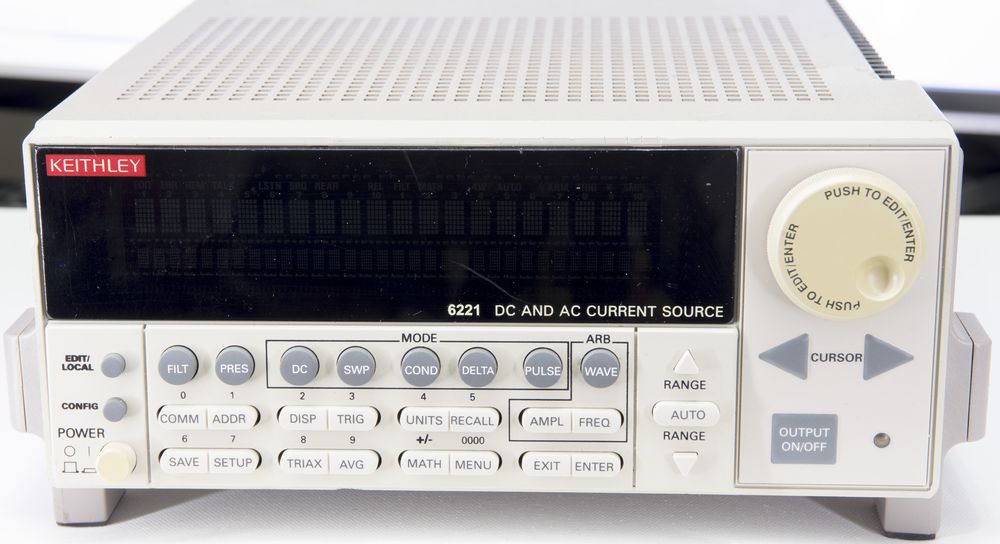
Keithley 6221 front panel
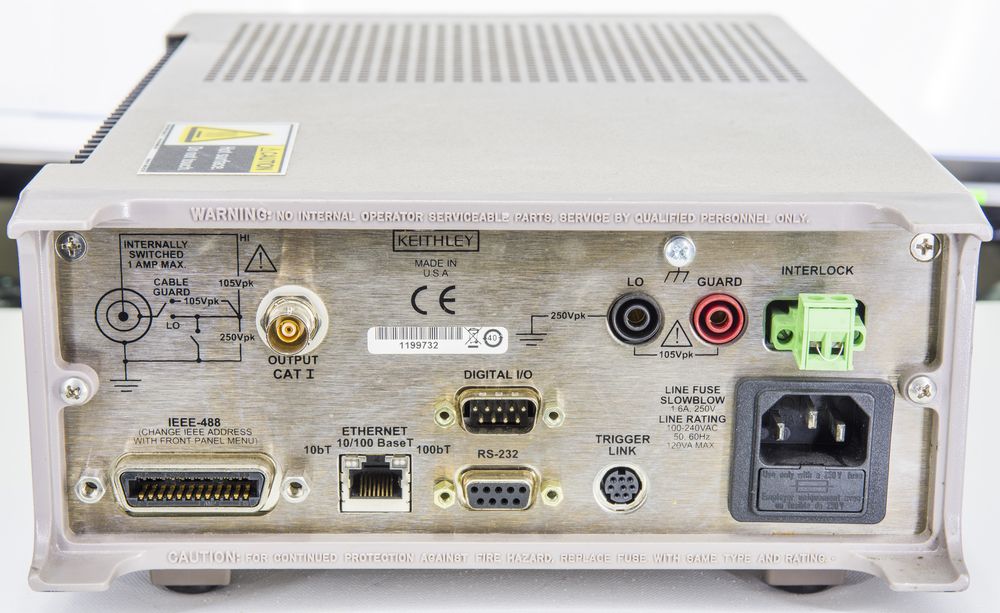
Keithley 6221 rear connectors
Internal construction, design features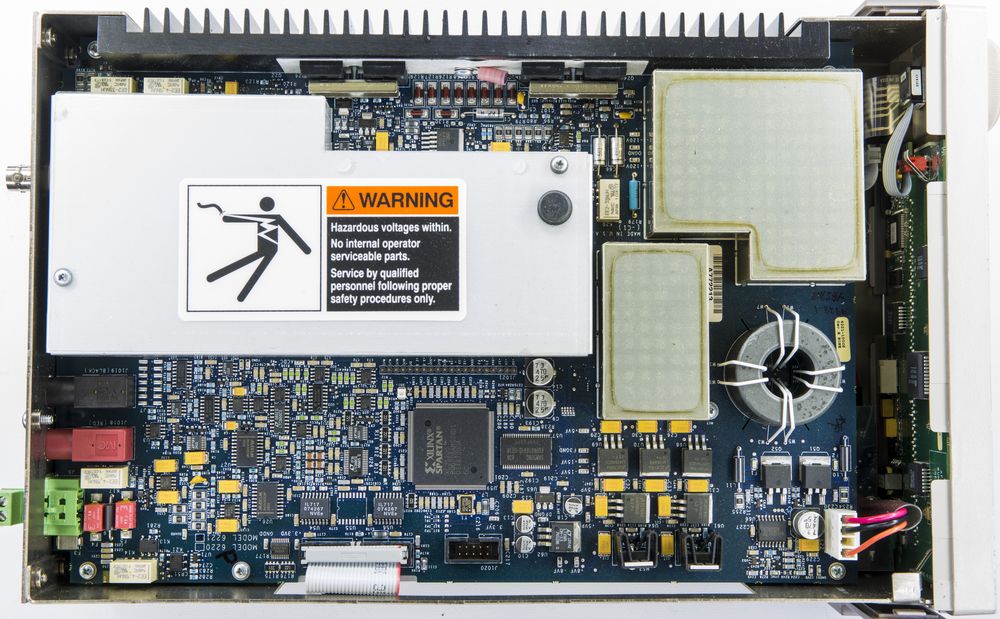
Cover removed, analog board overview
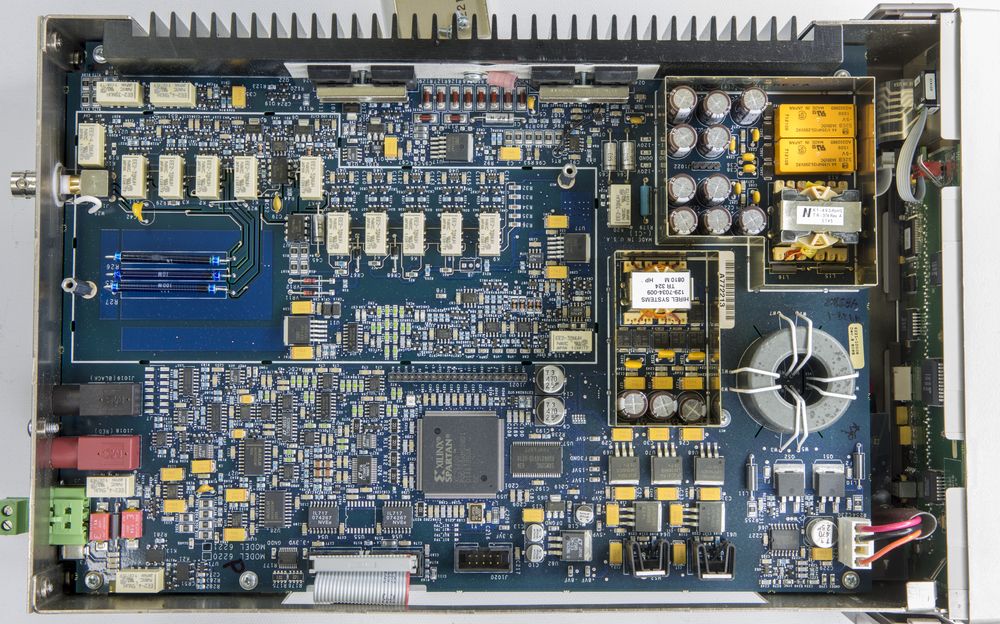
Analog board without shields
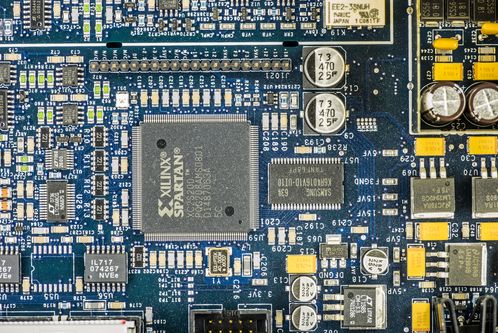
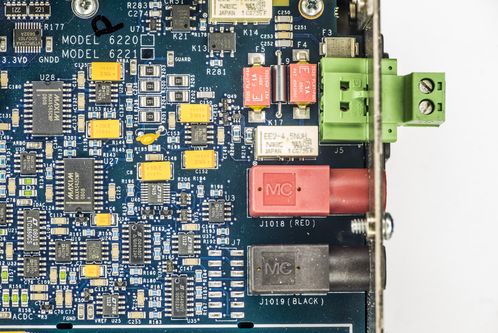
Analog domain FPGA, rear section and interlock circuitry
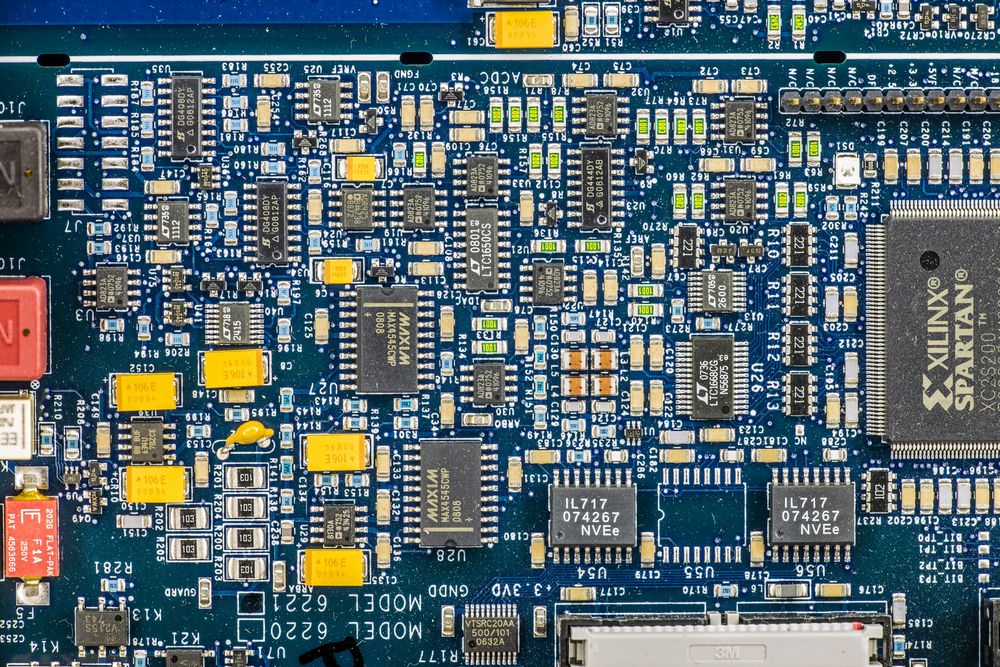
ADC/DAC and main reference section
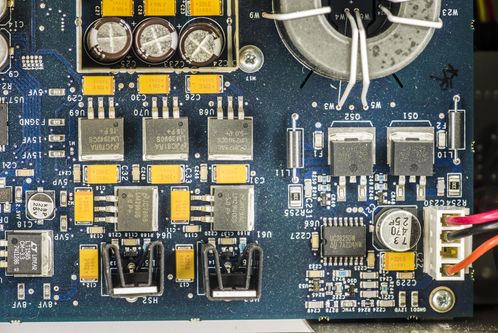
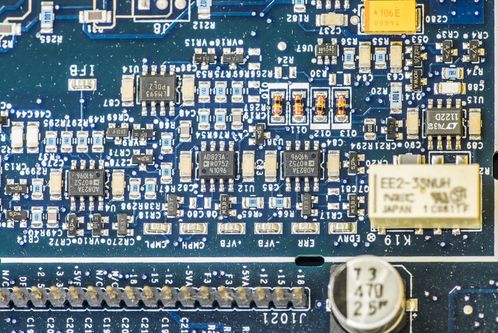
Analog board power supply
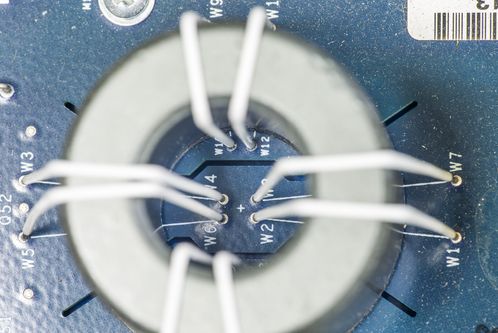
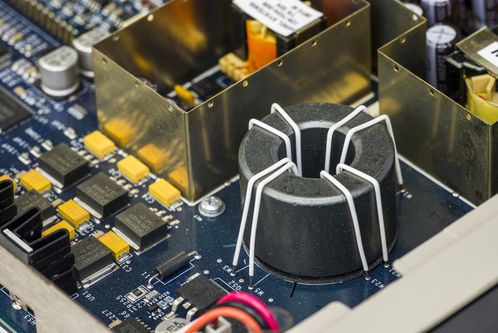
Common mode inductor, perhaps? I wonder what this thing does exactly.
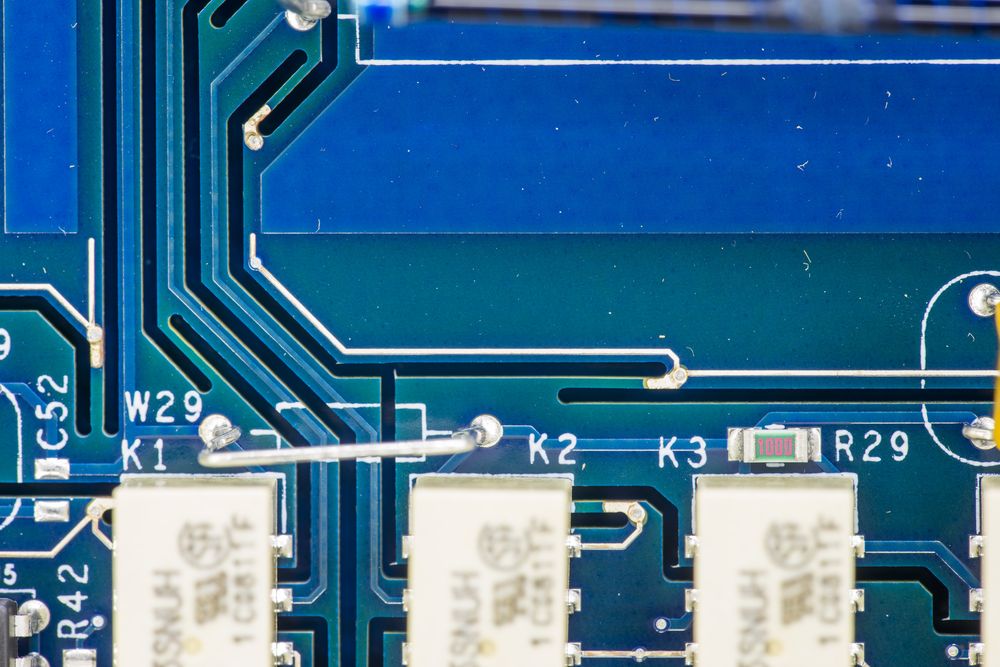
PCB cutouts to avoid leakage

High-current range relays and resistors
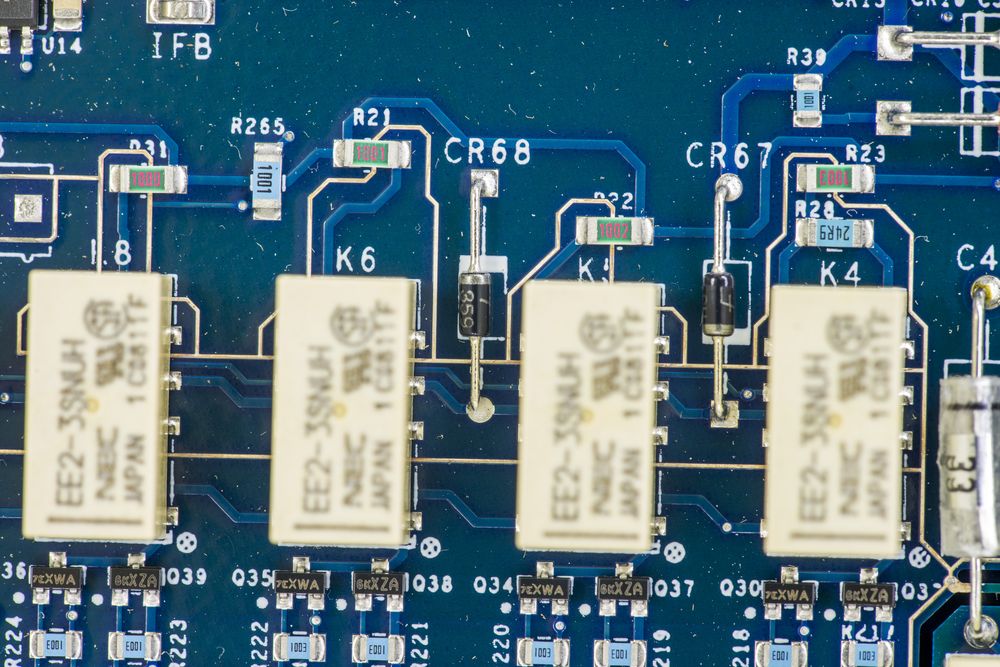
Medium current range relays and resistors
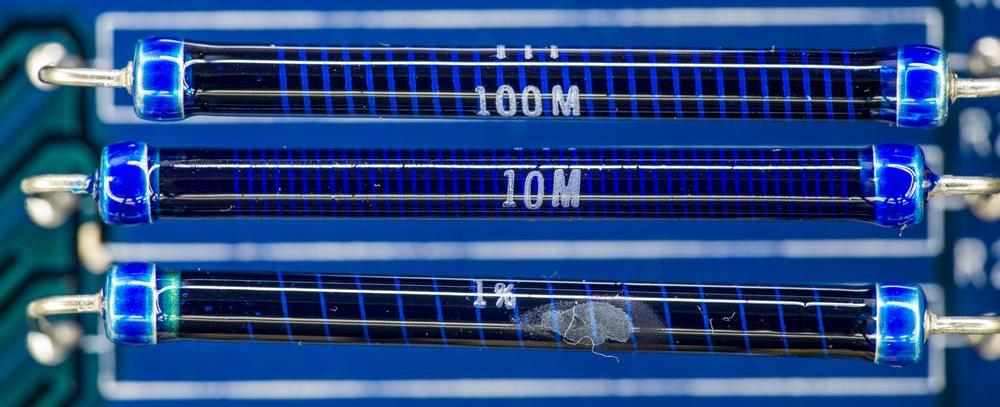
Low current range high value resistors
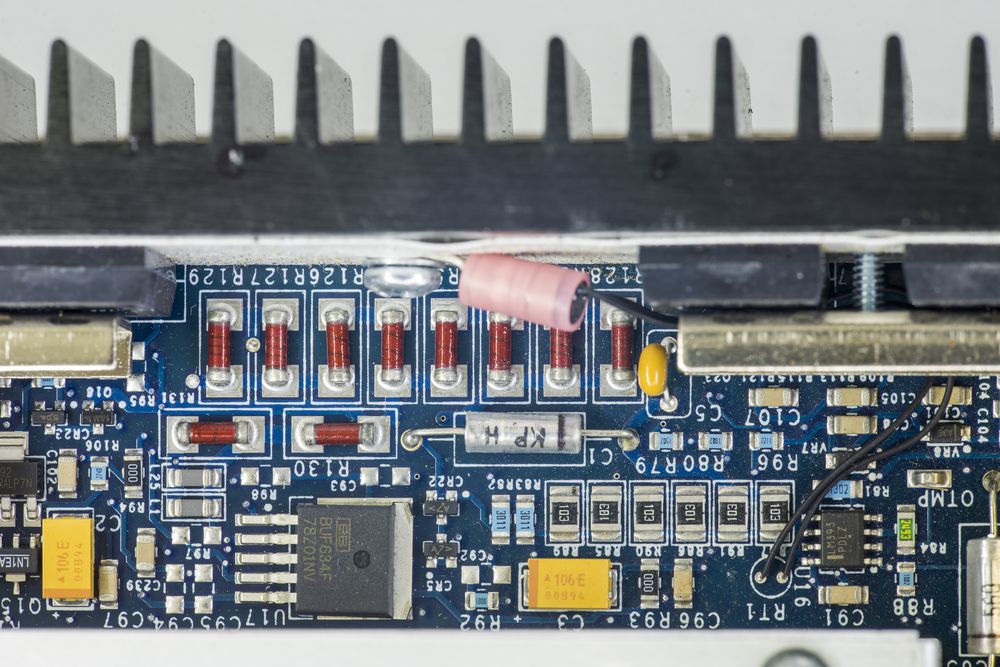
Output power stage
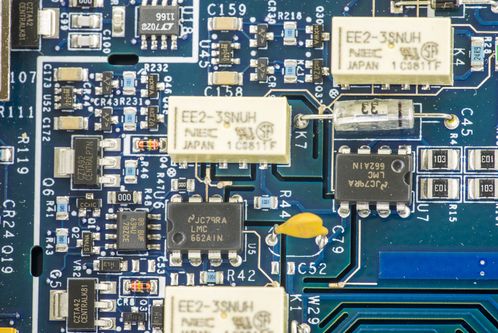
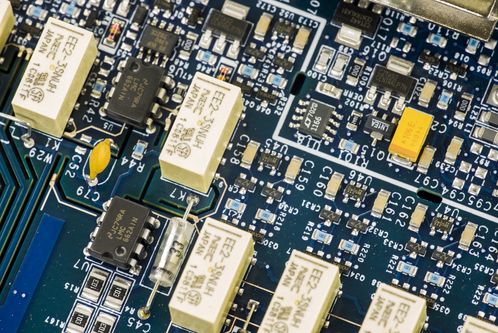
High impedance, low leakage amplifier front-end
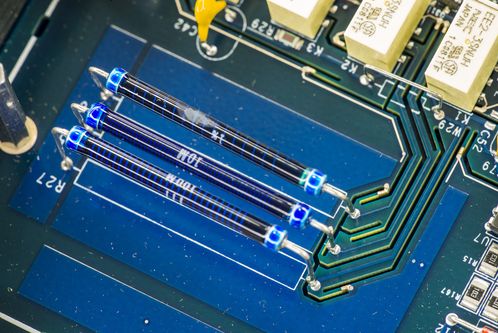
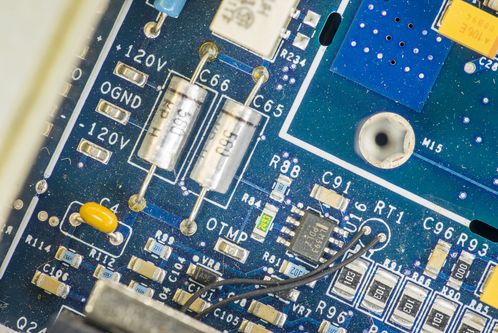
High impedance low current circut design
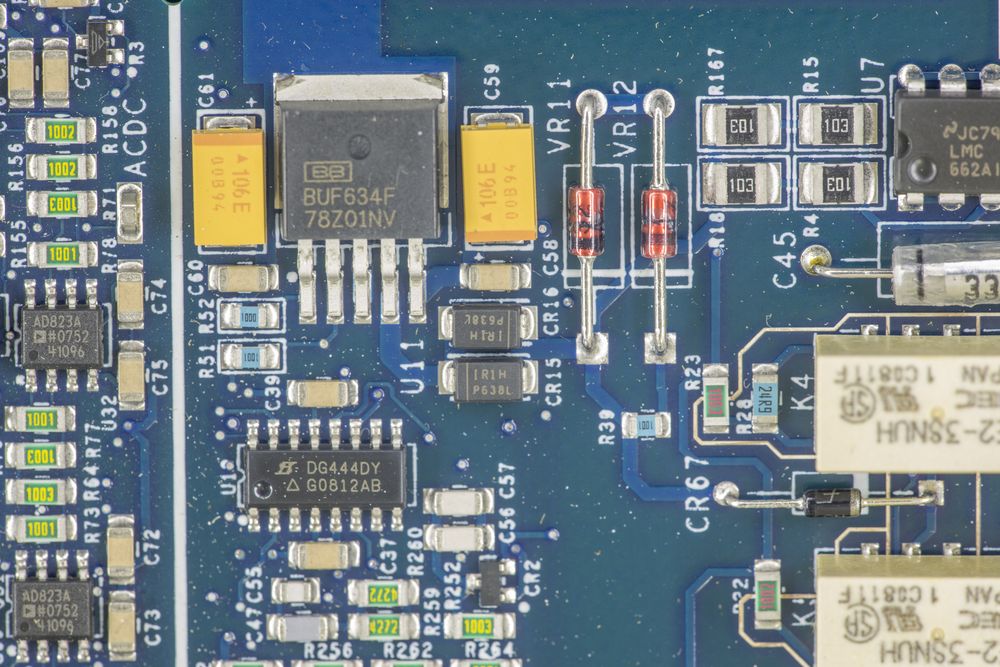
Auxilary bias?
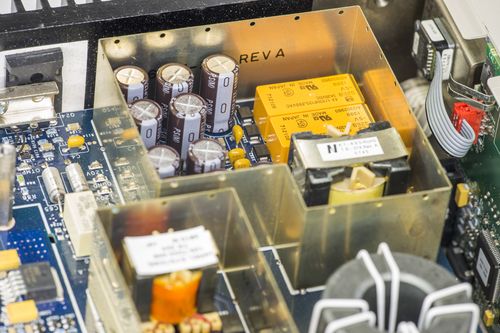
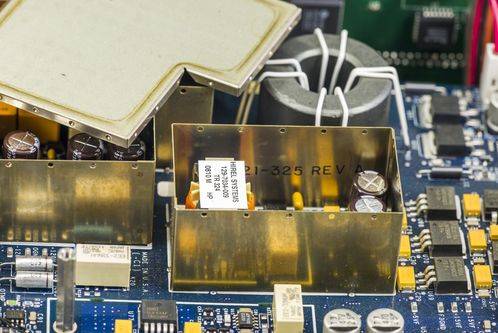
Fully shielded low-noise power supplies
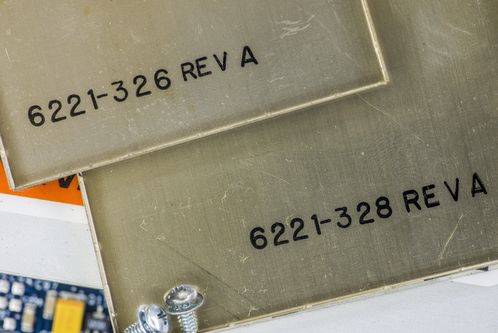
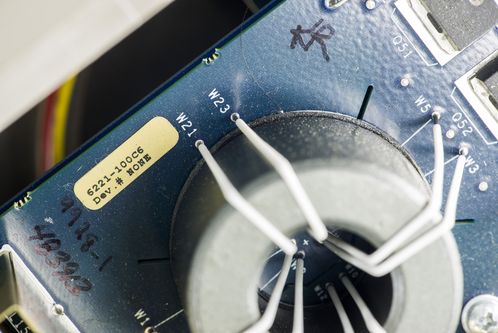
Mu-metal shielding and board label
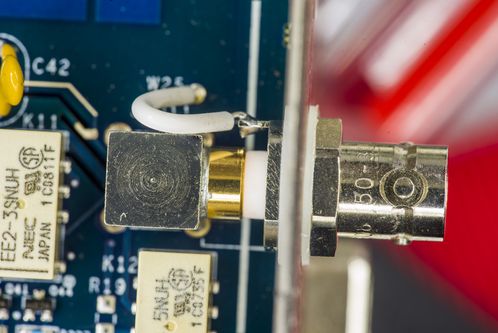
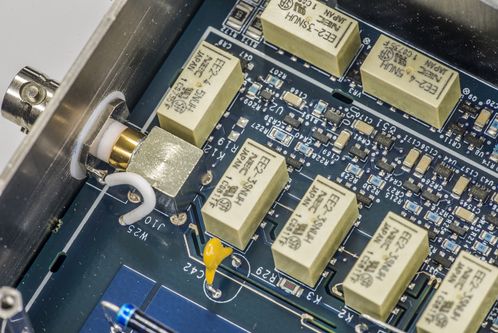
Triaxial 3-lug connector and input circutry
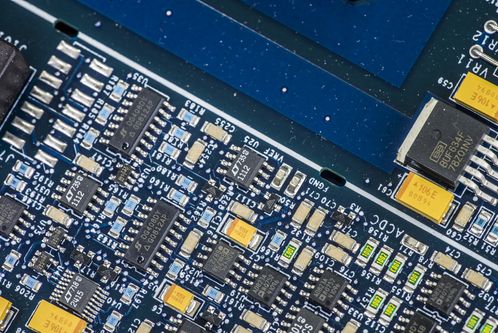
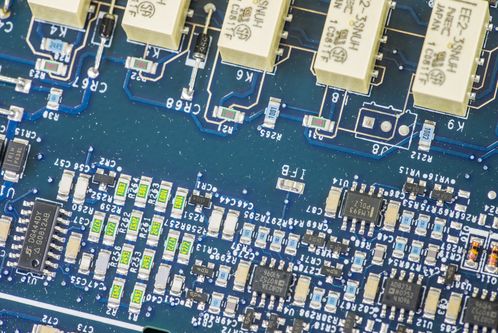
Voltage reference section and auxilary circuts
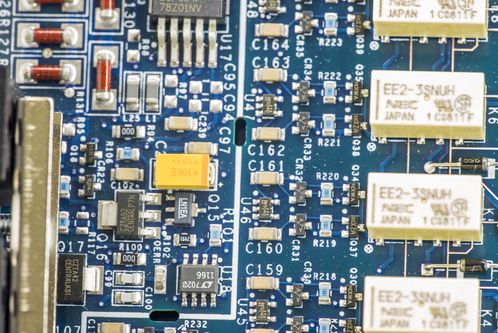
Relay drivers
Diagnostics and secret menuBy holding PULSE+RECALL during power on we can enter secret menu section.
This also unlocks self-diagnostics in TEST menu. I think they hide self-diagnostics for safety reasons, as 6221 can generate potentially lethal voltage levels on it's output.
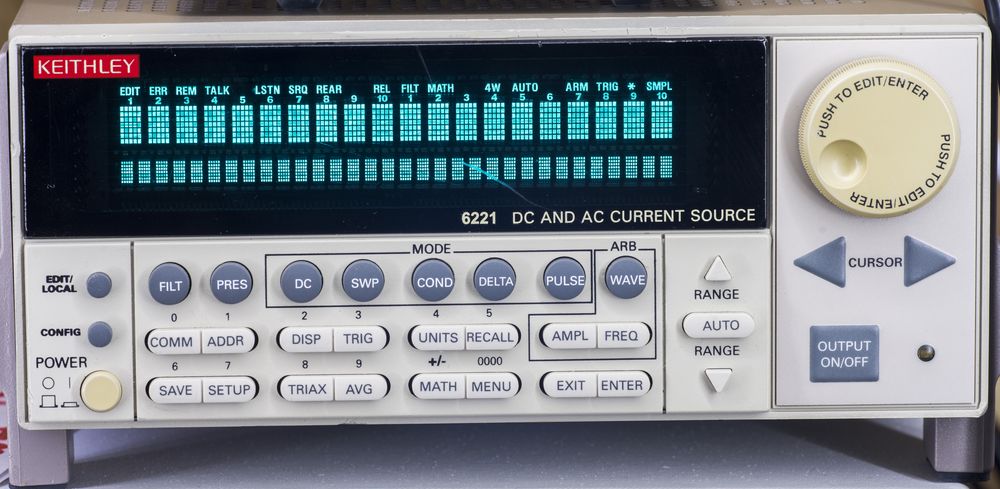
Vacuum display burn-in mode for segment brightness correction
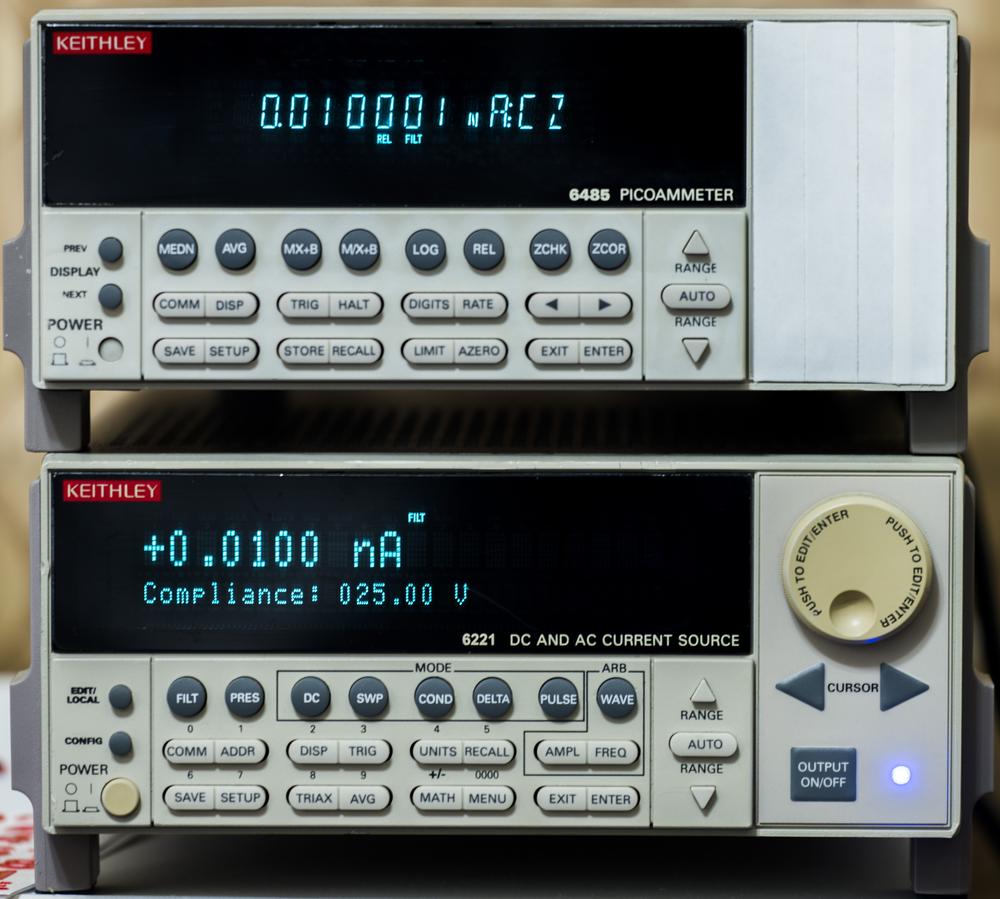
Test with 10pA current with Keithley 6485
RepairNo repair was required.


 Calibration
CalibrationCalibration procedure in manual calls for
HP 3458A 8.5-digit multimeter and Keithley 6487 picoammeter. Unlucky me, these ones I have, with little deviation by using
Keithley 6485 instead of 6487. DMM is used to verify current ranges from 100mA to 100nA and picoammeter take care of lowest 10 nA and 1 nA ranges.
Performance testTBD
Application example, measuring resistanceTBD. I will use this source for one of it's typical purposes, source current thru resistors to measure tempco. Before I was using Time 9823 calibrator or HP 3245A in current source mode, but these guys can't provide compliance higher than 10-something volts, which limits resistance measurements to about 50-80 KOhm. With 6221 I can extend voltages up to 100V, and that should let me measure few Meg resistances with better uncertainty. I don't have 2182A for delta measurements, but I have Keithley 2002 + EM A10 preamp which is better if I go milliohm-microohm regions
